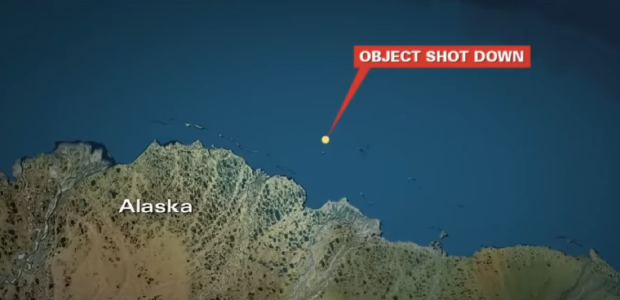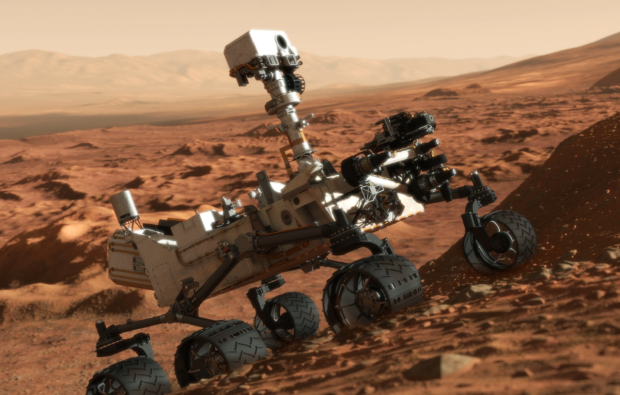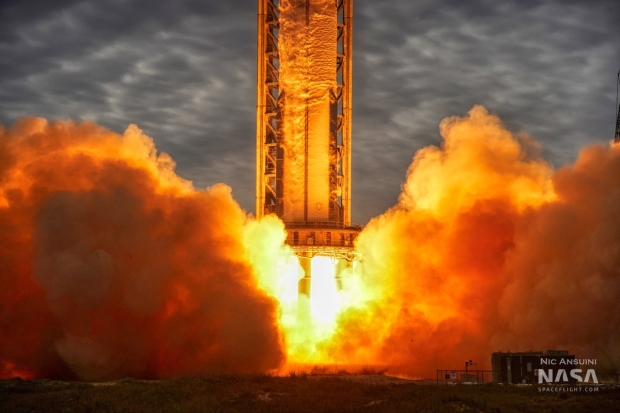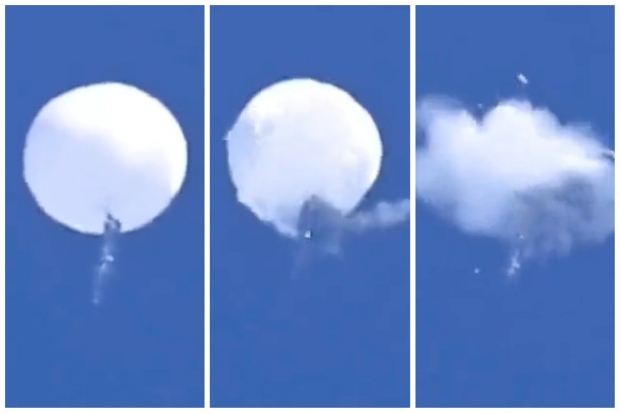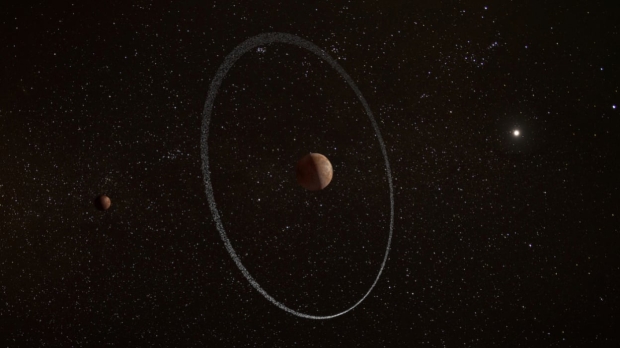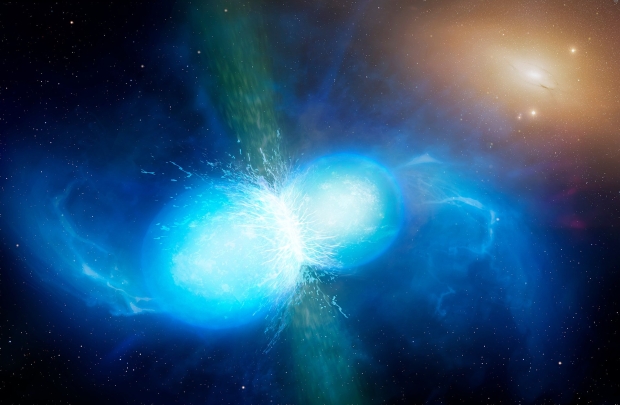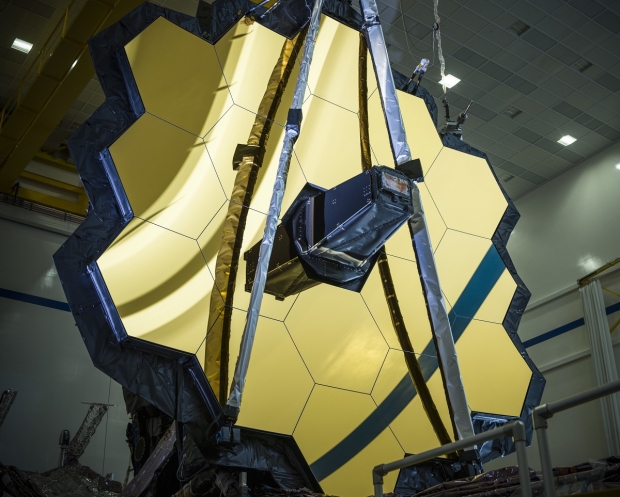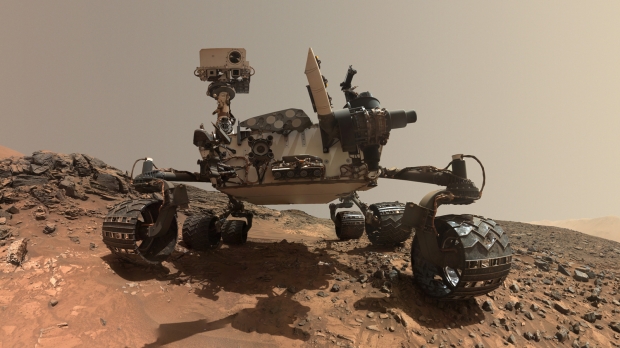Science, Space, Health & Robotics News - Page 64
US government drops update on car-sized UFO shot down over Alaska
The White House has announced that the U.S. military has taken down an unidentified flying object off the coast of Alaska.
The news of the Alaskan object being taken down comes after the U.S. government announced it successfully brought down a Chinese weather balloon off the coast of South Carolina. The balloon was suspected of conducting intelligence operations, and President Biden ordered its removal from U.S. airspace. The wreckage from the balloon was recovered a few days ago, and officials said that the balloon was equipped with multiple devices capable of intercepting and geolocating communications.
On Friday, the Pentagon commented on the object detected off the coast of the northeastern part of Alaska, saying it was much smaller than the Chinese weather balloon brought down a week earlier and that F22 shot down the object at 1:45 pm E.S.T. Notably, the Pentagon said the object was flying at about 40,000 feet and posed a risk to civilian air traffic, hence the decision for it to be taken down. U.S. Brig. Gen. Patrick Ryder, the Pentagon's chief spokesperson, said that pilots that flew alongside the object determined that the object was unmanned, was unable to maneuver in the air, and didn't resemble an aircraft.
Continue reading: US government drops update on car-sized UFO shot down over Alaska (full post)
NASA rover discovers surprising evidence of water on Mars
NASA's Curiosity rover has been exploring the surface of Mars since 2012 and has just found evidence of Mars having a watery past.
NASA has taken to its blog on its website and its social channels to share a discovery by its Curiosity rover. According to the space agency, Curiosity team members believed that they'd seen the last evidence of ancient lakes covering the region the rover is currently exploring. The reason for the team's doubt was simply due to rock layers where Curiosity is station forming under much drier conditions than regions the rover has previously explored.
To researchers' surprise, Curiosity has now found the clearest evidence of Mars' watery past than it ever has in the past. Curiosity has been traversing the foothills of Mount Sharp since 2014, as NASA believes the 3-mile-tall mountain would have once had many streams and lakes, making it a rich environment for any ancient microbial life. NASA explains that Mount Sharp consists of layers ranging from the oldest at the base of the mountain and the youngest at the top.
Continue reading: NASA rover discovers surprising evidence of water on Mars (full post)
Satellite images reveal the devastation of Turkey earthquake that killed 11,000+
A newly released satellite image has revealed the devastated region in Turkey that was only recently hit with a powerful 7.8 magnitude earthquake.
According to reports on February 6, a series of violent earthquakes struck southern and central Turkey, along with western Syria. The first was the 7.8 magnitude earthquake that hit Turkey and Syria, causing hundreds of buildings to collapse and the death of what is estimated to be 11,200 people. Teams are still on the ground, attempting to find any survivors underneath the piles of rubble. The second earthquake came only hours after the first and measured 7.5 in magnitude, shaking both Turkey and Syria.
The above image was published on Twitter by Planet, where the company says one of its satellites captured a birds-eye-view of the disaster-stricken city Kahramanmaras, a city in the Mediterranean Region of Turkey. At the moment, there are few satellites images of the disaster, but companies such as Planet, Maxar, NASA, the National Oceanic and Atmospheric Administration (NOAA), and the European Space Agency are working on capturing valuable satellite images of the region that will then be given to officials assisting the people of affected regions.
Elon Musk shares when SpaceX will take the human race to Mars
SpaceX has recently conducted a pivotal test on its journey to creating the transportation necessary to get humans to the surface of Mars.
SpaceX took to its social media channels to share footage of Booster 7's static fire test that was held at the company's Starbase facility in South Texas. The objective of the first stage static fire test was to gather data on the 33 Raptor engines that were intended to be fired. Unfortunately, only 31 of the Raptor 2 engines ignited, but overall the test seemed like a success as 31 Raptor 2 engines provided more than enough power to get Starship to orbit.
For those that don't know, SpaceX's Starship launch vehicle has been in development for many years now, but now development is reaching a critical point as the rocket is almost ready for its first orbital flight test. This static fire test of 31 Raptor 2 engines has tested the Ground Support Equipment (GSE), which has never felt the pressure of 31 Raptor engines firing at the same time. Additionally, SpaceX engineers will gather valuable information on Booster 7's health after the firing, which will be used to make not only Booster 7 more efficient but also future vehicles that will come after it.
Continue reading: Elon Musk shares when SpaceX will take the human race to Mars (full post)
US says China is lying over mystery balloon that was 'clearly for intelligence'
The United States government has claimed that China is lying about its intentions with its mysterious weather balloon that was recently shot down.
Last week the US government successfully shot down a Chinese weather balloon that was suspected of being capable of gathering data on neighboring American military facilities. American military brought the balloon down on Saturday as it was flying approximately 60,000 feet above sea level six nautical miles off the shore in Myrtle Beach, South Carolina. China responded to the attack on its balloon, claiming that it was caused by a "civilian" accident, and condemned the decision to attack a "civilian unmanned airship by force."
Additionally, China claimed that Beijing "repeatedly" informed the US military that the balloon was entering its airspace and that it was for civilian use only. Furthermore, China vowed that it would respond to the attack, as it believes the threat of the balloon was an "obvious overreaction and a serious violation of international practice".
Scientists discover unprecedented rings around an object in the solar system
A group of scientists has discovered rings around an object that resides in the frozen debris region beyond Neptune and Pluto.
Researchers have published their findings in the scientific journal Nature and explain that using the world's largest optical telescope, the 34-foot-wide Gran Telescopio CANARIAS in the Canary Islands, Spain, to hone in on a dwarf planet called Quaoar. This dwarf planet doesn't meet the specifications to make it a full planet, but it does feature something special - rings, much like Saturn.
The report states that astronomers before this discovery didn't believe that rings could exist at such great distances from their host celestial bodies, especially small celestial bodies such as Quaoar. The small dwarf planet is approximately four billion miles away from Earth and is only 690 miles in diameter, making it half the size of Pluto, another dwarf planet.
Rare 'one-in-ten-billion' star system discovered and it's going to explode
A group of astronomers has used the SMARTS 1.5-meter Telescope at Cerro Tololo Inter-American Observatory in Chile to discover what is being described as the first example of a rare type of star system.
According to a press release and a study published in the scientific journal Nature, the team of astronomers discovered this unusual star system called CPD-29 2176, which is located approximately 11,400 light-years away from Earth. The star system is so rare that the researchers estimate there are only about ten such star systems within the entire Milky Way galaxy. So, what makes it so rare? CPD-29 2176 was found to have the right conditions for a kilonova to take place, an extremely powerful explosion that occurs when a neutron star collides with another neutron star.
The astronomers outline in the press release that data from the SMARTS telescope informed researchers on the orbital characteristics of the star system and what stars it consists of. The researchers found one neutron star that was created by an ultra-stripped supernova, an end-of-life explosion of a massive star that has had much of its outer atmosphere stripped away by a companion star. Additionally, the researchers found a second closely orbiting star that is on its way to becoming an ultra-stripped supernova.
Scientist use alien-detecting AI to discover eight 'suspicious' signals
A team of researchers used an artificial intelligence system to identify some "suspicious" radio signals that may have an extraterrestrial origin.
University of Toronto student Peter Ma spoke to New Atlas, where he explained that he developed a new machine-learning algorithm that is designed to sort through radio signals that are detected from deep space. Ma brought the AI to Breakthrough Listen, an Australian-based initiative that aims to detect artificial radio signals coming from other planets or locations in our solar system in hopes of being able to discover life outside of Earth.
For example, if a high-tech alien race scanned Earth, they would pick up the many radio signals that are bouncing around our planet. Breakthrough Listen plans on doing that, but for any signal coming to Earth. However, the task is not a small one, as there are many radio signals out in deep space, and the majority of them come from stars, black holes, quasars, supernovae, and many other objects that can release radio signals. Since the universe is quite noisy, humans struggle to filter through and categorize all of the detected radio signals, which is where artificial intelligence comes into play.
NASA confirms its Webb telescope accidentally observed its smallest object yet
NASA's James Webb Space Telescope has captured an image of an asteroid that's approximately the size of Rome's Colosseum.
An international team of European astronomers has used Webb's Mid-Infrared Instrument (MIRI) to detect an interloping asteroid that's estimated to be anywhere between 300 and 650 feet wide, or approximately the size of Rome's Colosseum. While that may sound like a large asteroid, NASA writes that this object is likely the smallest object Webb has observed so far and could be a great example of an object that measures under 0.6 miles that resides within the main asteroid belt located between Mars and Jupiter.
Webb's observations of the asteroid were published in the scientific journal Astronomy and Astrophysics, where it's explained that the asteroid was detected while Webb was performing calibration testing for its MIRI instrument. Researchers pointed the MIRI instrument at the main belt asteroid 1998 BC1 and began taking calibration images. According to NASA, these tests failed for technical reasons such as brightness and the telescope not being pointed at the right target.
NASA's Mars rover photographs metallic object that collided with the surface
NASA's car-sized Mars rover named Curiosity has stumbled across an iron-nickel meteorite while exploring a region of Mars.
NASA has taken to its social channel and explained in a blog post on the NASA Jet Propulsion Laboratory website that the Curiosity rover found the iron-nickel meteorite on January 28, 2023, in a region around Mount Sharp, a large mountain located in the Gale crater. NASA has written on the Curiosity rover Twitter account that it's not "uncommon to find meteorites on Mars" and that this isn't the first discovery by Curiosity. In 2016 the rover discovered a meteorite now called "Egg Rock", or the golf ball.
As for the meteorite that Curiosity most recently found, NASA writes that its approximately 1 foot wide and has been named Cacao. The space agency explains that Curiosity snapped a panorama with its Mast Camera, or Mastcam, which features a 100-millimeter focal length lens. The panorama consists of 19 individual images that are then stitched together to form the above image. This image is then color corrected to "match lighting conditions as the human eye would perceive them on Earth," writes NASA.


